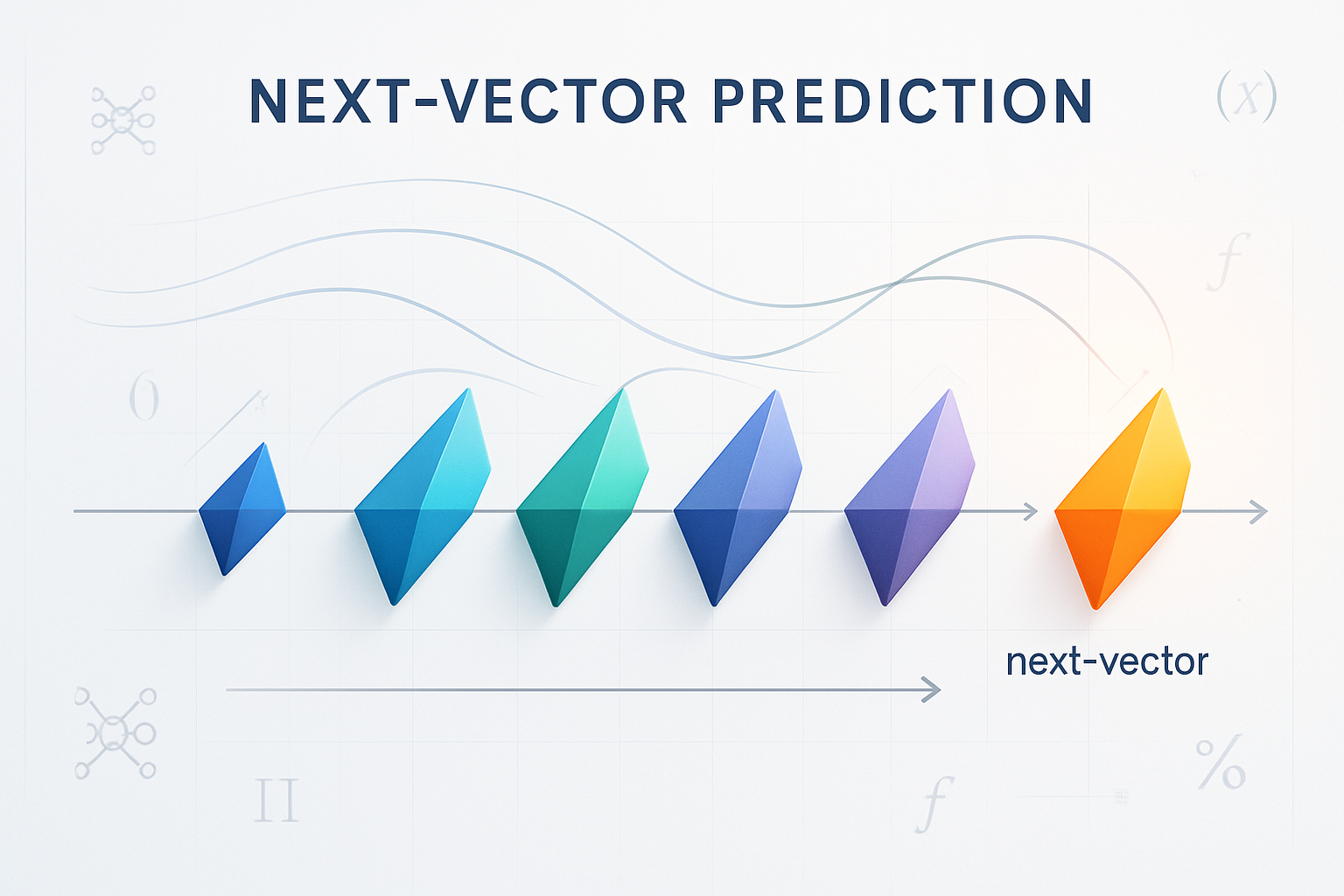The Distribution Imperative in Generative AI
Generative AI is the hottest frontier in tech, with new apps, APIs, and platforms launching at a dizzying pace. But here’s the hard truth: even a groundbreaking product can be overlooked without strong distribution. In today’s crowded AI landscape, “if you build it, they will not just come” is a dangerous myth. The companies that win are those who control the pipes to the audience—your audience is your moat, your reach is your leverage.
Distribution vs. Product Quality: Why the Best Tech Doesn’t Always Win
It’s a bitter pill, but a mediocre product with outstanding distribution will often crush an outstanding product with mediocre distribution (joanwestenberg.medium.com). The market doesn’t always reward the best tech—it rewards the product that reaches the right people at the right time with the right message. In generative AI, where dozens of tools compete for attention, distribution eats everything.
Instagram’s $1B Lesson
When Facebook acquired Instagram for $1 billion, it wasn’t for its filters or codebase—it was for its distribution channel: a rapidly growing, highly engaged user base. For AI startups, cultivating channels to users is a core asset, often more valuable than the tech itself.
Generative AI Moats: Distribution as Defensibility
Leading AI companies build defensibility through distribution partnerships and ecosystem lock-in. OpenAI’s extensive distribution via Microsoft’s products gave it an immense reach advantage (medium.com). To survive, founders must bake distribution strategy into their business model from day one.

1. Organic vs. Paid Distribution: Finding the Right Balance
Organic Distribution: The Slow-Burn Engine
Organic (earned/owned) channels—content, communities, SEO, social—attract users naturally, building credibility and a lasting presence. Ranking in Google or growing a following takes time, but the results compound. Users overwhelmingly trust organic results more than ads—about 65–70% prefer to click natural search results over paid links.
Paid Distribution: The Traffic Faucet
Paid channels—ads, sponsored posts, influencer deals—offer immediate, targeted exposure. You can pinpoint demographics and see instant traffic, but it requires continuous spend and can feel less authentic. Paid campaigns stop yielding traffic once the budget stops, while organic efforts keep drawing traffic long-term.
Cost, ROI, and the Hybrid Approach
Organic isn’t “free”—it requires time and content creation—but often has a lower ongoing cost per acquisition. Paid channels require money for each click or impression, but can be highly scalable. For high-intent audiences (e.g., someone searching “AI copywriting tool”), a mix of both is often best. 70% of SaaS consumers say organic search delivers better sales results than pay-per-click ads (mailmodo.com), yet paid ads are useful to quickly bolster traffic or target specific niches.
Successful startups combine both: content/SEO for sustainable inbound, paid for targeted growth spurts. The key is to continually measure ROI and adjust spend vs. effort. Paid can amplify content that already works, and organic success can lower paid acquisition costs over time.
2. Content Marketing and Thought Leadership
Educate, Don’t Just Sell
Content marketing—blogs, whitepapers, webinars, newsletters—is the cornerstone of organic distribution. By creating valuable, educational content, an AI startup can attract its target audience by helping them solve problems or learn new trends. This positions your company as a trusted thought leader in generative AI.
74% of marketers say content marketing helped generate demand/leads, and nearly half say it directly helped increase sales (hubspot.com). Calls-to-action in content (e.g., “try a demo,” “download a guide”) convert traffic into leads.
Formats: Blogs, Videos, Newsletters
- Long-form blog posts can rank on Google and provide in-depth education.
- Short-form videos or demos (YouTube, social) cater to visual learners and showcase your product’s capabilities.
- Email newsletters and LinkedIn articles nurture relationships and keep your brand top-of-mind.
Thought Leadership & Trust
Publish research, share unique data insights, or comment on industry trends. Being the source of insightful information builds credibility with both customers and media. Over time, an audience will trust your brand and be more inclined to try your product.
Repurposing and Amplification
Maximize distribution by repurposing content across channels. A webinar can become a blog summary, video snippets for Twitter/LinkedIn, an infographic for Instagram, and a SlideShare or Reddit post. This “create once, distribute forever” mindset (kpplaybook.com) ensures each piece of content reaches far more people.
SEO Integration
Content marketing and SEO go hand-in-hand. Identify keywords and common questions (e.g., “How to integrate AI in marketing”) and create high-quality content around those. Optimizing on-page SEO (titles, meta descriptions, etc.) will help your content rank, feeding your distribution pipeline with steady organic traffic.
Thoughtful Promotion
Don’t rely on “publish and pray.” Proactively promote content: share new blog posts in relevant online communities (like r/MachineLearning or Hacker News), syndicate articles on Medium, and encourage team members to share through their networks. Content distribution is just as important as content creation (kpplaybook.com).

3. Strategic Partnerships for Expanded Reach
Leveraging Partner Ecosystems
Identify established companies or platforms whose audience overlaps with yours, and form partnerships to tap into their distribution channels. The right strategic alliance can give a generative AI startup instant access to thousands or millions of potential users. OpenAI’s partnership with Microsoft to integrate GPT-4 into Microsoft’s products is a prime example.
Integration Partnerships
Aim to get your AI app embedded in widely adopted workflows or platforms. When your tool becomes a default option within another popular product, switching costs for users increase and you gain distribution “for free.” For example, integrating your generative AI API into Slack means users can discover and enable your tool with minimal friction.
Co-Marketing and Referrals
Structure co-marketing campaigns with partners—joint webinars, case studies, guest posts, or bundled promotions. By aligning with a reputable partner, you borrow their credibility and reach.
Reseller and Channel Partner Programs
Consider traditional distribution channels—resellers, consultancies, or affiliate partners who can sell or recommend your product in exchange for a commission. For B2B AI platforms, creating a network of solution partners can rapidly scale your reach into enterprises.
Platform Partnerships and OEM
Some generative AI companies pursue OEM deals where their technology is white-labeled or embedded inside another product. For instance, your AI model could power features in a larger company’s software—this can yield distribution and revenue without your brand even being front-and-center.
Examples
- Integration: Perplexity AI achieved scalable distribution by integrating into web browsers, appearing as a built-in answer engine.
- Alliances: OpenAI & Microsoft—Microsoft’s investment and integration of ChatGPT into Bing and Office 365 provided OpenAI a distribution network touching hundreds of millions of end-users.
- Complementary Startups: Two startups with complementary offerings (e.g., an AI content generator and an AI image creator) might partner to refer users to each other or create a seamless integration.
Caution: Alignment and Negotiation
Strategic partnerships must be set up thoughtfully. Ensure incentives align, and be wary of partnerships that limit your independence or hand over too much control. Always have an exit plan or diversification strategy.
4. Community Building and Evangelism
Cultivating a User Community
Building a community around your product is one of the most powerful organic distribution tactics. An engaged community (on Discord, Slack, Reddit, or forums) creates a network of users who help each other, share your tool, and provide feedback. 90% of social media marketers say having an active online community is crucial to a successful strategy (hubspot.com).
Channel Choices: Find Your Tribe
Go where your target users naturally congregate—developer forums, Reddit communities, Slack or Discord groups, or social platforms like Twitter. Host an official Discord server or Slack workspace for your product where users can discuss use cases, ask questions, and get updates.
Fostering Engagement
Actively engage with and nurture your community. Host AMAs, share sneak peeks, encourage users to share what they build, and recognize community contributions. This creates a sense of belonging that inspires members to invite others.
Benefits of Community as Distribution
A strong community can dramatically lower customer acquisition costs through word-of-mouth effects. Satisfied users will naturally recommend your AI app to friends or colleagues. In open-source or developer-focused AI projects, a vibrant community can even contribute improvements or create plug-ins, extending your product’s reach (medium.com). Community discussions on public forums can improve SEO/discoverability.
Patience and Authenticity
Building community takes time and consistency. In a survey of open-source software startups, 69% said it took over 2 years of community building before they even tried to monetize (medium.com). Authenticity is key: handle issues transparently, be present in discussions, and avoid overt salesy behavior.
Community as a Moat
Long-term, a large and loyal community forms part of your defensible moat. New competitors might copy your features, but they can’t instantly copy a passionate user base. Community members often create user-generated content—tutorials, YouTube reviews, blog posts—that further amplifies your distribution.
Developer Evangelism
If your product is targeted at developers, developer evangelism deserves special focus. A dev evangelist’s job is to engage developer communities, speak at meetups, create sample integrations, and champion your API/technology. Aligning with respected developer evangelists can communicate the value of your project to broader technical audiences.
Tactics to Build Developer Community
- Meet developers where they are: Promote your project on Discord, Slack, Hacker News, Product Hunt.
- Create developer-centric content: Publish technical blog posts, how-to guides, and video tutorials.
- Empower a champion: Align with a prominent developer evangelist or advocate in your field.
Measure Community Health
Track metrics like community size, engagement, and referral traffic. Gather qualitative feedback—what features are power users evangelizing? Where do new users hear about you? Use this info to double down on successful channels.

5. SEO and Discoverability in the AI Era
Being Found When It Matters
Search engines remain a major way potential customers discover solutions. 66% of B2B SaaS buyers use search engines to research solutions before purchasing (mailmodo.com). If your SEO is weak, you risk losing those prospects to competitors.
Keyword Strategy
Identify the keywords and questions your target audience might search for. Map each to content on your site—landing pages, blog posts, documentation. Use on-page SEO best practices: include the keyword in title tags, headings, meta description, and naturally throughout the content.
Quality Content Wins
Modern SEO is less about keyword-stuffing and more about quality and relevance. Make sure your content is comprehensive, up-to-date, and valuable. 61% of SaaS marketers say blogging is more effective for lead gen than other tactics, and 98% of SaaS companies have blogs to attract leads (mailmodo.com).
Technical SEO & Website Optimization
Ensure your website is fast-loading, mobile-friendly, and indexable by search crawlers. Use schema markup for any AI-specific content. Given the rise of AI-driven search answers, consider how your content could be referenced by these systems.
Backlinks and Authority
Earning backlinks from reputable sites is crucial to building your domain’s authority. Engage in PR and outreach to get your content or product featured on high-quality websites. Backlinks act as votes of confidence.
SEO in the AI Era: New Considerations
As generative AI becomes integrated into search (like AI summaries at the top of search results), being the source that AI summaries draw from can drive traffic. Also, optimize for YouTube SEO—many users search there for “how to use [AI tool]” or “[Product] tutorial.”
Local and Niche SEO
If your AI solution targets a specific geographic market or niche industry, optimize accordingly. Dominating a niche search term can sometimes yield better ROI than generic terms.
Metrics and Continuous Improvement
Track SEO performance through metrics like organic traffic, search rankings, and conversion rate from organic visitors. SEO is an ongoing game—regularly analyze which content is performing and update content periodically.
ROI of SEO
Though slower to ramp up, SEO can yield impressive ROI due to compounding effects. Organic search still generates over 50% of all web traffic (brandsbro.com). In SaaS, organic search drives an estimated ~14–17% of leads on average (mailmodo.com), and these often convert well.
6. App Marketplaces and Integration Platforms
Meet Users Where They Are
App marketplaces and integration platforms are “app stores” or directories within larger ecosystems. For a generative AI app, getting listed on relevant marketplaces can significantly boost visibility among a qualified audience. Examples include Salesforce AppExchange, Shopify App Store, Microsoft Teams/Office add-in store, Slack App Directory, Chrome Web Store, or niche ones like Notion’s template gallery or HubSpot’s integrations marketplace.
Low Friction User Acquisition
When your tool is available in a marketplace that your target users regularly browse, adoption friction drops. Users can often install or integrate with one click, try out your functionality within a familiar platform, and you piggyback on the trust of that platform.
Integration = Distribution
Aim to integrate your AI into widely used platforms as part of your distribution plan. Being embedded in essential workflows creates ecosystem lock-in—a distribution moat because customers rely on your solution as part of a bigger product they already use.
Generative AI Marketplaces
New types of marketplaces are emerging specifically for AI models and prompts (e.g., Hugging Face’s model hub, OpenAI’s Plugin marketplace, or prompt marketplaces). If applicable, list your models or plugins in these channels.
Ratings and Reviews
Treat your marketplace listings as a marketing asset. Encourage satisfied users to leave positive reviews and ratings. High-rated apps with good reviews get more visibility and trust.
Partnerships with Platform Owners
If your app drives value for a platform, the platform itself might promote you. Maintain good relationships with partner managers at major platforms. Co-marketing opportunities like being featured in a platform’s newsletter or blog can arise.
Revenue Sharing and Business Model
Many marketplaces will take a revenue share or have specific guidelines. Build this into your pricing strategy. In some cases, offering a free integration (with upsell to your paid plans outside the marketplace) can be wise.
Analytics & Optimization
Track how many sign-ups or installs come from each marketplace, and how those users engage compared to other channels. Optimize the listing if certain messaging seems to work better.
Stay Compliant and Up-to-date
Keep up with platform changes. Regularly update your app listing with new capabilities—showing momentum can attract users.
Success Story Example
Zoom’s App Marketplace saw many startups thrive by building Zoom add-ons. An AI meeting transcription startup that integrated early into Zoom’s marketplace gained thousands of users rapidly because they were easily discoverable by any Zoom user seeking transcription.
7. YouTube – The Power of Video and AI Influencers
Visual Learning Drives Adoption
Generative AI tools can often wow people when seen in action. YouTube has become a crucial channel for shaping perception and adoption of AI products. A compelling demo or review video can communicate the value of your tool far better than text description—seeing is believing (kingy.ai).
YouTube as a Search & Discovery Platform
YouTube is the world’s second-largest search engine. Users search for queries like “best AI image generator” or “how to use [YourTool].” Having content (either on your own channel or via influencers) targeting those queries is critical for discoverability.
Influencers – The New AI Evangelists
A burgeoning ecosystem of AI-focused YouTube influencers has emerged. These creators have built large followings by reviewing, demonstrating, and experimenting with the latest AI tools. Partnering with them can be like “injecting rocket fuel” into your marketing (kingy.ai).
Authenticity and Storytelling
The beauty of YouTube is the combination of visual demonstration with personal storytelling. A charismatic presenter can frame your AI app in a narrative that resonates. When an influencer genuinely enjoys your product and integrates it into their content, it feels like a friend showing you something cool, rather than a company selling to you.
Example – The Rise of Kingy AI
Kingy AI is a prime example of a YouTube channel fueling AI tool distribution. As of mid-2025, Kingy AI’s subscriber count soared past 900,000, with over 30 million total video views—a massive, highly engaged audience of AI enthusiasts. Being featured on such a channel can lead to explosive growth in users almost overnight.
Influencer Collaborations
Many AI YouTubers are open to sponsorships or collaborations. Notably, Kingy AI actively invites partnerships and regularly features sponsored deep-dives. Channels like Matt Wolfe (~767K subscribers), AI Explained, and Two Minute Papers also often collaborate with tool creators.
How to Leverage Influencers
- Identify relevant influencers: Look for channels whose audience aligns with your target.
- Reach out with value: Provide early access, offer to help with a demo or exclusive feature, and highlight why their audience would love your tool.
- Allow creative freedom: Authenticity is paramount. If an influencer decides to feature your product, don’t script them too heavily.
Creating Your Own YouTube Content
In addition to influencer marketing, consider launching your own YouTube channel for your brand. Publish product tutorials, use-case showcases, webinar recordings, and short “tips and tricks” clips. Optimize your video titles, descriptions, and tags with relevant keywords.
Community and Engagement on YouTube
Engage with comments—answer questions, thank users for feedback. Encourage viewers to like, subscribe, and share. Use YouTube’s features: create playlists, use YouTube Live for Q&A sessions or product launches, and the Community tab for quick updates.
Measuring YouTube Impact
Track view counts, watch time, click-through rates, and referral traffic to your website from YouTube. Many AI startups see a direct correlation between a popular YouTube review and a spike in sign-ups. Content on YouTube has a long shelf-life—a helpful review or tutorial can keep attracting viewers for years.
Beyond YouTube – Multi-Channel Video
Consider a multi-channel video strategy. Clips from your YouTube videos can be shared on LinkedIn, Twitter, or shorter versions on TikTok/Instagram Reels. The idea is to let video content permeate all relevant networks.
8. Monetization Strategies Tied to Distribution
Content as Lead Gen
A key reason to invest in distribution is to fill the top of your funnel with potential customers. Use content to offer lead magnets (e.g., a free e-book or “AI Strategy Assessment” PDF) gated behind an email form. This way, your distribution efforts convert viewers/readers into identifiable leads you can nurture.
Affiliate and Influencer Programs
Turn others into your distribution amplifiers by creating incentive programs. Affiliate marketing involves giving partners or content creators a unique referral link or code and paying them a commission for every user or customer they bring. Influencer deals might involve paid sponsorships or discount codes for the influencer’s audience.
Product-Led Growth (PLG) Tactics
Product-led growth means using your product itself as the primary driver of acquisition, conversion, and expansion. This typically involves freemium models, free trials, and viral features.
- Freemium: Offer a free tier of your generative AI app that provides real value but with some limits.
- Free Trials and PQLs: Let users experience the full product for a limited time. Identify Product-Qualified Leads (PQLs) and target them for conversion.
- Viral Loops: Design your product to encourage users to invite others or share content.
- Usage-Based Upsells: Monetization in PLG often comes from a subset of heavy users or teams who need more.
Leveraging Platform Monetization Options
Some distribution channels themselves provide ways to earn revenue or offset costs—YouTube monetization, sponsored community content, marketplace revenue share.
Lead Nurturing & Conversion
Distribution brings the leads in—but monetization happens when those leads convert to paying customers. It’s crucial to have a solid conversion funnel behind the scenes.
Metrics and Attribution
Track metrics like CAC (Customer Acquisition Cost) per channel, LTV (Lifetime Value) of customers by source, and conversion rates by source. This will highlight which distribution strategies yield the most bang for buck.
Scaling Up: When Distribution Feeds Monetization
A positive feedback loop can emerge: as you monetize better, you can reinvest more into distribution. Companies that master this interplay grow exponentially.
Conclusion: Integrating Distribution into Your Startup’s DNA
Distribution is Not Optional
In the era of Generative AI, “build it and they will come” is a risky myth. No matter how revolutionary your AI tool is, it needs a megaphone. The companies that succeed marry great products with aggressive and smart distribution strategies.
Trial, Measure, Iterate
There’s no one-size-fits-all formula—the key is to experiment across channels and see what resonates with your target audience. Measure results diligently and iterate. Be agile: trends change quickly, so keep an ear to the ground and adapt your distribution tactics.
Build a Distribution Moat
Think long-term about how your distribution can become a self-reinforcing moat—a massive community, a content library that dominates SEO, or a set of integrations that make your tool ubiquitous. These are assets that competitors will find hard to replicate quickly.
Persuasive and Value-First Outreach
Maintain a persuasive yet educational tone in your marketing. By genuinely helping your audience, you persuade by building goodwill. This consultative approach is particularly effective in AI, where trust is paramount.
Stay Ethical and Customer-Centric
As you scale distribution, keep a keen focus on user experience and ethics. Avoid spammy tactics, respect privacy, and ensure your messaging is honest. A good reputation is a foundation for successful distribution.
Closing Thought – Distribute to Dominate
The generative AI startup space is booming, but those who dominate distribution will dominate the market. By weaving together organic and paid strategies, leveraging video and influencers, building community and partnerships, and aligning it all with monetization tactics, you create a powerful engine for growth. The startups that treat distribution not as an afterthought but as a core competency are persuading the market and capturing mindshare every day.
Be one of those startups—make distribution a part of your company’s DNA from the start. With persistence and a data-driven approach, you can amplify your message, educate the masses, and ensure your generative AI innovation finds the wide audience it deserves.
Further Reading & Resources:











Comments 1